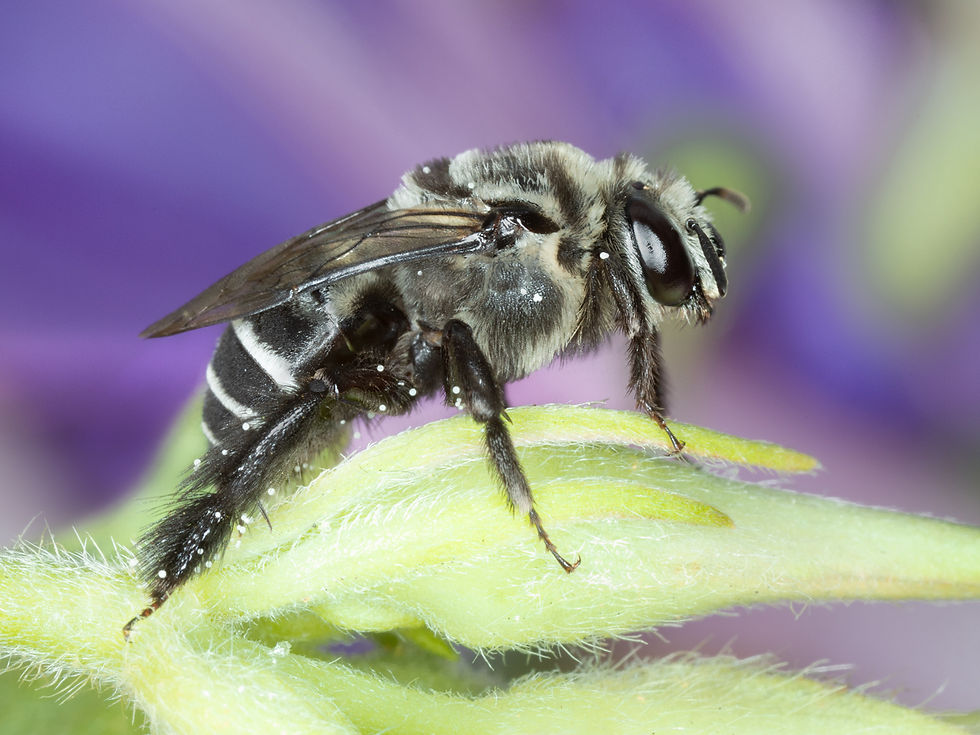SHARP-EATMAN
NATURE
PHOTOGRAPHY
FLORIDA BEES
IDENTIFICATION PAGE # F12
June 2024
Melitoma
from Gainesville
Melitoma taurea emerges in Alachua County in mid-May and remains through at least mid-June. It appears on purple morning glory (Ipomoea purpurea), man of the earth (locally called potato vine) (Ipomoea pandurata) and Cirsium. The bee shown below was one of dozens of males occupying an area overgrown with purple morning glory, on the road shoulder of a busy urban avenue.
Male and female Melitoma taurea can be told apart at a glance by the following: females have three well-defined tergal bands (on T2-T4). Males have 4 well-defined tergal bands (T2-T5), as well as a narrow apical band on T6, and long white hairs on T7. Females' legs are slightly long, while males' are conspicuously long. Niether males nor females have very long antennae.
Melitima taurea
Bull chimney bee
Size: male 12 mm
Food plants:
Purple mornning glory
(Ipomoea purpura)
When and where seen:
June 12, 2024
(Gainesville)

A male Melitoma taurea ensconced in a morning glory blossom

Males typically rest with their faces peering outward from the blossom

Melitoma taurea males (like the females) have very long tongues.

A male Melitoma taurea: note the long hind legs, a hallmark trait of chimney bees

A male Melitoma taurea

Two male Megachile georgica on tarflower
A male Melitoma taurea
Melitima taurea
Bull chimney bee
Size: female 13 mm
Food plants:
Purple mornning glory
(Ipomoea purpura)
When and where seen:
June 24, 2024
(Gainesville)

A female Melitoma taurea

Alternate view of female bee

A female Melitoma taurea inside a purple morning glory

Alternate view of female Melitoma taurea inside mroning glory

A female Melitoma taurea

A female Melitoma taurea